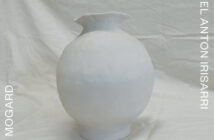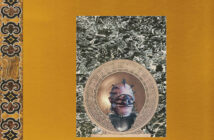

Koji Asano is one of a new bread of composers being generated by the technological age in which we live. All you need is a laptop, a few mics and some sound gear to hear the play back and wam – bam you’re an avant-garde classical composer composer. Right? Wrong. In the early 20th century, when artists started to really take a swipe at convention they came armed with intellectual manifesti. Each manifesto presented a point of reference and or ideology in which to frame their work. In so doing the pioneers of the avant-garde had some defence against the mass criticism of the establishment. Today in many contemporary settings this degree of explanation is not as necessary thanks to the foundations created by these individuals. Having said this when identifying as a contemporary classical composer you leave yourself open to a more traditional analysis. As a result things like this review happen….
Asano very bravely names these works Trio suites No 1-3. I say bravely for the sole reason that structurally these compositions are nothing like Suites. A suite, originally a form of early dance music, is commonly characterised four movements. These in the French school are referred to as allemande, courante, sarabande and the gigue.
Movements are not present.
Melodically the listener is hard pressed to enjoy the prominent melody in these works. This is due to what seems like a completely random introduction of unmotivated notes and what seems to be pointless never ending phrases. When you think you’ve found the melody amongst the mayhem it is then lost in a mish mash of ideas. In so doing Asano pulls the unification of texture to breaking point. The music becomes more like white noise, easy to ignore as it tunes out to the background of your consciousness.
Further the rhythmic nature of each part almost seems complex for the sake of complexity. I wouldn’ be surprised if they were off cuts from a quantised live feed. Further the lack of rhythmic association between each part aids in the destruction an already none existent unity in these works. It must be said though that Ueda, Nakae and Miyasaka to their credit performed these passages with such rhythmic accuracy as to make any sibelius playback envious.
Harmonically it is difficult to concentrate on the over all texture. In all three cases the Piano, not surprisingly, sits in the middle of the texture attempting to maintain some sense of tonal unity. Meanwhile the oboe, masterfully played by Akiko Nakae, and cello part, drunkenly played by Shunichiro Miyasaka, are at extreme atonal odds with each other. In so doing Asano creates a texture comparable to a neurotic mother taking two ADD kids out for a walk in a sterilized environment.
In terms of over all production the simple things make a big difference. For example the low E flat on the piano was annoyingly out of tune and Miyasaka on the cello was simply not up to the task. Finally it would have been a good idea to allow the ensemble a greater period of rehearsal as an ensemble. This is most important when performing works that defy a sense of unity.
In stark contrast to this Ensemble Deneb a baroque ensemble employed to record Koji Asano’ Baroque Ensemble No 1 – 5 are a world class. Established in 1999, the members know each other’ strengths and weaknesses. As a result the parts communicate with each other in a call and response like manner. The melodies are effortlessly passed from one individual to the next.
These are better attempts at ensemble writing. In particular ‘Baroque ensembles No 3,4 & 5′. Here we find the beginnings of structure, more clarity in Asano’ composition. But there are still moments that don’ really work. For example chordal clusters experiencing the occasional tension and release, at times don’ seem to be intentional. Further the odd note found in a tonal melody, which pops out at an odd interval only to be ignored or completely forgotten by the rest of the phrase.
The main criticism I have for the works I’ve reviewed of Asano’ thus far is that there is to many ideas. As a result no single idea is fully formed into what could potentially be beautiful.
M Buckingham



